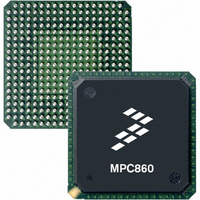MC68EN360ZQ25VL Freescale Semiconductor, MC68EN360ZQ25VL Datasheet - Page 691

MC68EN360ZQ25VL
Manufacturer Part Number
MC68EN360ZQ25VL
Description
IC MPU QUICC 32BIT 357-PBGA
Manufacturer
Freescale Semiconductor
Datasheets
1.MC68EN302AG20BT.pdf
(8 pages)
2.MC68EN360VR25L.pdf
(14 pages)
3.MC68EN360VR25L.pdf
(2 pages)
4.MC68EN360ZQ25VL.pdf
(962 pages)
Specifications of MC68EN360ZQ25VL
Processor Type
M683xx 32-Bit
Speed
25MHz
Voltage
3.3V
Mounting Type
Surface Mount
Package / Case
357-PBGA
Family Name
M68xxx
Device Core
ColdFire
Device Core Size
32b
Frequency (max)
25MHz
Instruction Set Architecture
RISC
Supply Voltage 1 (typ)
3V
Operating Supply Voltage (max)
3.3V
Operating Supply Voltage (min)
2.7V
Operating Temp Range
0C to 70C
Operating Temperature Classification
Commercial
Mounting
Surface Mount
Pin Count
357
Package Type
BGA
Lead Free Status / RoHS Status
Contains lead / RoHS non-compliant
Features
-
Lead Free Status / Rohs Status
Not Compliant
Available stocks
Company
Part Number
Manufacturer
Quantity
Price
Company:
Part Number:
MC68EN360ZQ25VL
Manufacturer:
Freescale Semiconductor
Quantity:
10 000
- MC68EN302AG20BT PDF datasheet
- MC68EN360VR25L PDF datasheet #2
- MC68EN360VR25L PDF datasheet #3
- MC68EN360ZQ25VL PDF datasheet #4
- Current page: 691 of 962
- Download datasheet (4Mb)
The port C lines associated with the CDx and CTSx pins have a mode of operation where
the pin may be internally connected to the SCC but may also generate interrupts. Port C still
detects changes on the CTS and CD pins and asserts the corresponding interrupt request,
but the SCC simultaneously uses the CTS and/or CD pin to automatically control operation.
This allows the user to fully implement protocols V.24, X.21, and X.21 bis (with the assis-
tance of other general-purpose I/O lines).
To configure a port C pin as a CTS or CD pin that is connected to the SCC and also gener-
ates interrupts, use the following steps:
7.14.10 Port C Registers
The user interfaces with port C via five registers. The port C interrupt control register
(PCINT) indicates how changes on the pin cause interrupts when interrupts are generated
with that pin. The port C special options register (PCSO) indicates whether certain port C
pins have the ability to be connected to on-chip peripherals while simultaneously being able
to generate an interrupt. The other three port C registers also exist on the other ports:
PCDAT, PCDIR, and PCPAR. Since port C does not have open-drain capability, it does not
contain an open-drain register.
4. Set the PCINT bit to determine which edges cause interrupts.
5. Write the corresponding CIMR bit with a one to allow interrupts to be generated to the
6. Read the pin value using the PCDAT.
1. Write the corresponding PCPAR bit with a zero.
2. Write the corresponding PCDIR bit with a zero.
3. Write the corresponding PCSO bit with a one.
4. Set the PCINT bit to determine which edges cause interrupts.
5. Write the corresponding CIMR bit with a one to allow interrupts to be generated to the
6. The pin value may be read at any time using PCDAT.
CPU32+ core.
CPU32+ core.
These steps correspond to the “software operation” mode of the
SCM DIAG bits on the MC68302.
After connecting the CTS or CD pins to the SCC, the user must
also choose the “normal operation” mode in DIAG bits of the
general SCC mode register (GSMR) to enable and disable SCC
transmission and reception with these pins.
Freescale Semiconductor, Inc.
For More Information On This Product,
MC68360 USER’S MANUAL
Go to: www.freescale.com
NOTE
NOTE
Parallel I/O Ports
Related parts for MC68EN360ZQ25VL
Image
Part Number
Description
Manufacturer
Datasheet
Request
R
Part Number:
Description:
Manufacturer:
Freescale Semiconductor, Inc
Datasheet:
Part Number:
Description:
Manufacturer:
Freescale Semiconductor, Inc
Datasheet:
Part Number:
Description:
Manufacturer:
Freescale Semiconductor, Inc
Datasheet:
Part Number:
Description:
Manufacturer:
Freescale Semiconductor, Inc
Datasheet:
Part Number:
Description:
Manufacturer:
Freescale Semiconductor, Inc
Datasheet:
Part Number:
Description:
Manufacturer:
Freescale Semiconductor, Inc
Datasheet:
Part Number:
Description:
Manufacturer:
Freescale Semiconductor, Inc
Datasheet:
Part Number:
Description:
Manufacturer:
Freescale Semiconductor, Inc
Datasheet:
Part Number:
Description:
Manufacturer:
Freescale Semiconductor, Inc
Datasheet:
Part Number:
Description:
Manufacturer:
Freescale Semiconductor, Inc
Datasheet:
Part Number:
Description:
Manufacturer:
Freescale Semiconductor, Inc
Datasheet:
Part Number:
Description:
Manufacturer:
Freescale Semiconductor, Inc
Datasheet:
Part Number:
Description:
Manufacturer:
Freescale Semiconductor, Inc
Datasheet:
Part Number:
Description:
Manufacturer:
Freescale Semiconductor, Inc
Datasheet:
Part Number:
Description:
Manufacturer:
Freescale Semiconductor, Inc
Datasheet:











